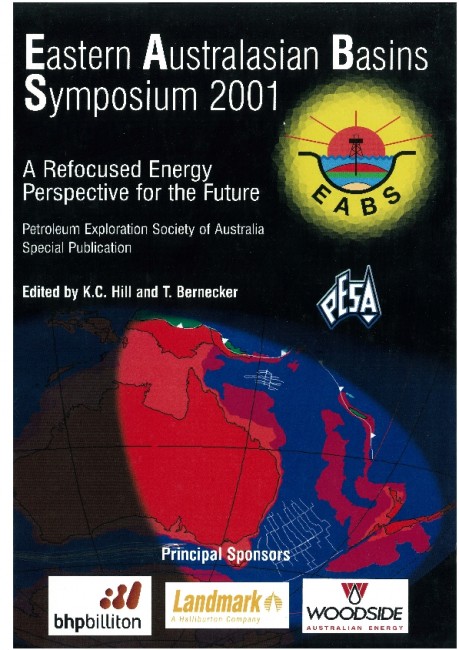Publication Name: Eastern Australian Basins Symposium 2001
Authors: A.D. Partridge
Date Published: November 2001
Number of Pages: 33
Reference Type: Magazine Article
Abstract:
Upper Cretaceous sediments were first discovered along the Southern Margin of Australia in the Otway Basin during the 1950' s, and the principal formations assigned to the Sherbrook Group were first described from early petroleum exploration wells in the onshore Port Campbell Embayment. New studies of the type sections indicate that many of the problems concerning the age of formations and extent of diachronism shown on published stratigraphic charts can be traced back to inadequate or imprecise biostratigraphy, exacerbated by the limitedsuites of electric logs available in the early wells. Nearby recent wells contain detailed palynology and modern suites of electric logs. Once the lithological and log correlations are adjusted to conform to the type
sections any diachronism of the formations mapped in the Port Campbell Embayment is generally less than the resolution of the current palynological zones. Much of the initial poor understanding of the stratigraphy originates from the marked lateral thinning (10:1) of stratigraphic units between wells only a few kilometres apart, an aspect that was not appreciated by the early geologists, and could not be resolved by the early biostratigraphy. Consequently, formations were originally mapped with much less extreme thickness variations and the variety of lithologies allowed within the formations were significantly expanded, and these broader lithological concepts were unfortunately applied throughout the whole basin. In adjusting the application of the
revised formations to the broader basin the Skull Creek Mudstone is raised to the rank of formation, while in the Gambier Embayment the Mount Salt Formation is revived, and the Morum Formation and Argonaut Member are defined as new stratigraphic units.
Revised ages are also assigned to the unconformities at the base and top of the Sherbrook Group. At the base, the Waarre Formation is interpreted as no older than Turonian, rather than mostly Cenomanian as traditionally assumed, implying a much longer duration for the Otway Unconformity. At its top, the major unconformity is placed within the Timboon Sandstone as a continuous but condensed shale sequence named the Massacre Shale is identified at the Cretaceous/Tertiary boundary.


